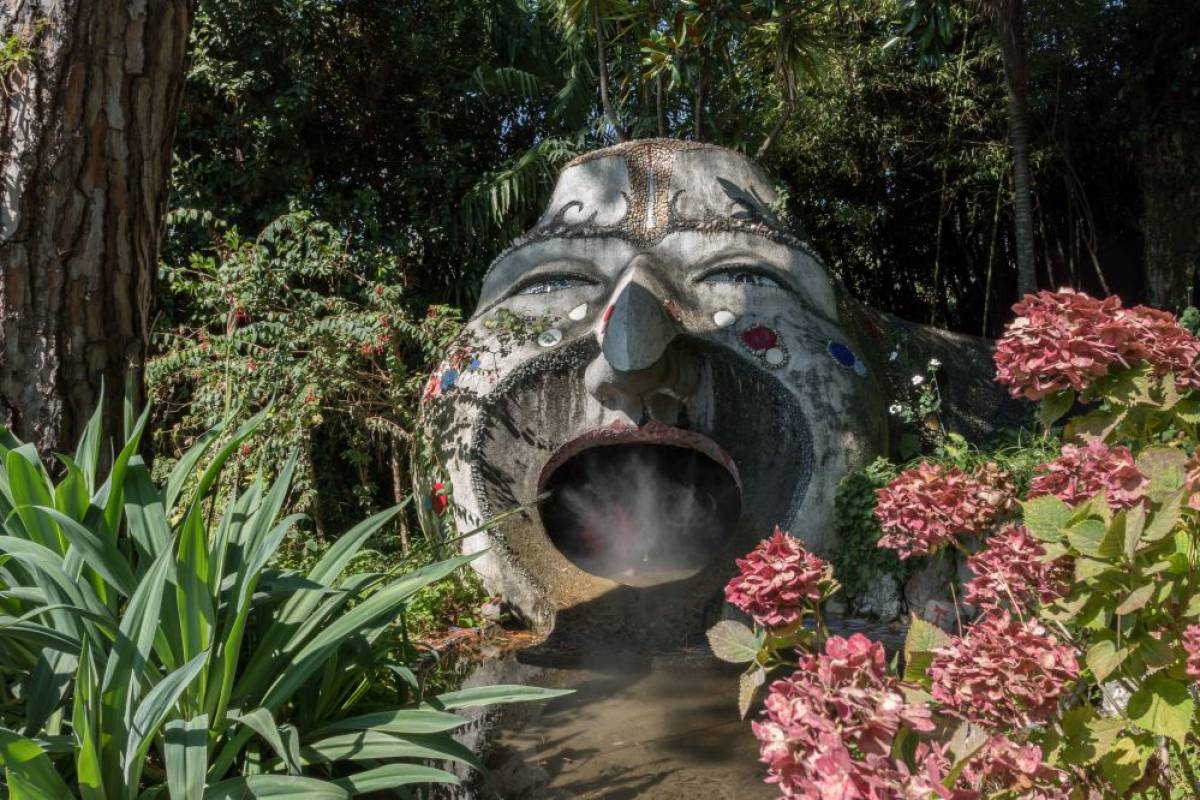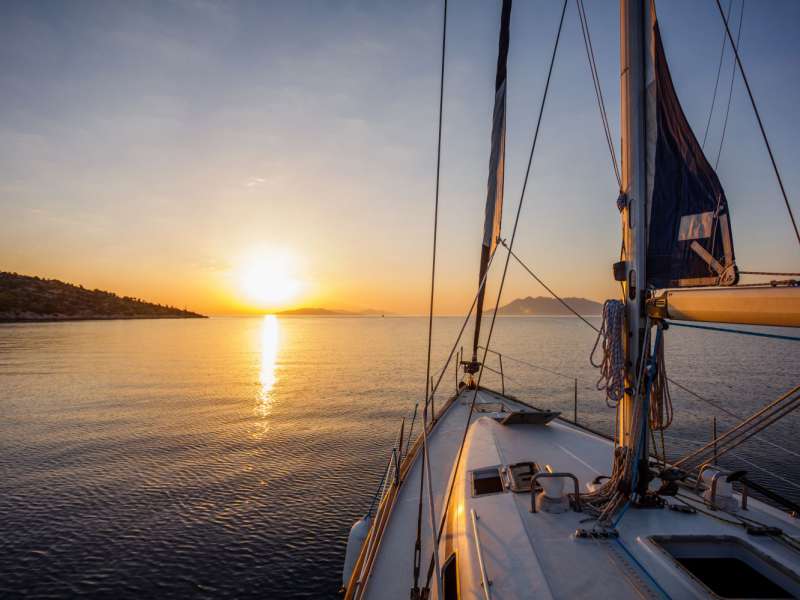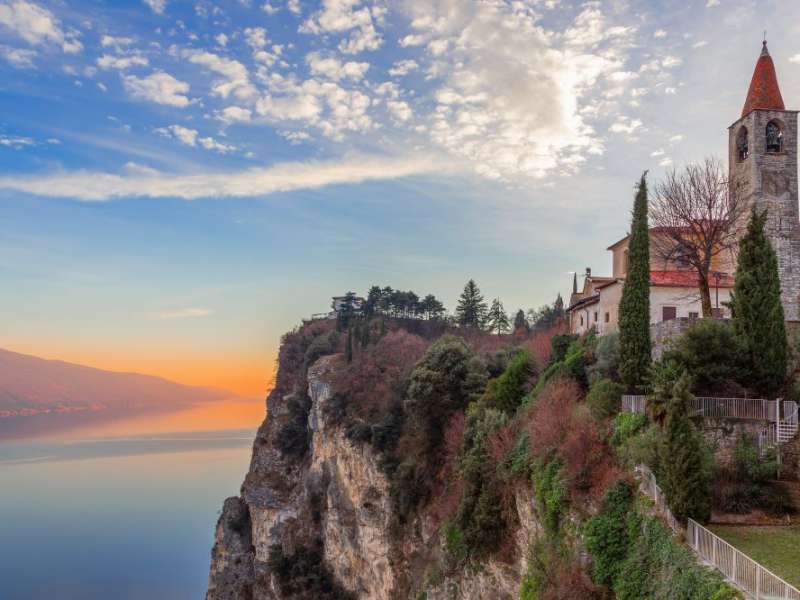Thanks to its microclimate that is mild all year long and the numerous waterways in the area, over the centuries Lake Garda has gained the name of "Paradise of Gardens".
Many varieties of flowers and plants grow in this part of the lake, which has historically been visited by botanists from all over the world to discover its potential because of its mild temperatures.
It was between the end of the 19th and the beginning of the 20th century, the artistic period known as the Belle Epoque, that this area of the lake, in the small town of Gardone Riviera, began its transformation into a tourist location and international health resort, with the construction of the first large hotels and their luxurious gardens.
Gardone from this moment on became known as the "City-Garden" and is still today the starting point to admire the richest gardens of our area.
Here are some that can be visited on the western shore of the lake, ideal destinations for a walk in spring or a summer outing with the whole family.
Hruska Botanical Garden, now owned by the Heller Foundation
One of the most important figures in the design and creation of the "City-Garden" was the Czech botanist Arthur Hruska, who moved to this area in the early 1900s because of its particular climate.
Here he decided to create a botanical garden enriched by every species of flora from his extensive research during his travels around the world, which is now considered "the most majestic of Eden's gardens".
Covering almost 10,000 square meters, it houses more than 3,000 varieties of plants from the five continents, including cacti, edelweiss, magnolias, orchids, water lilies, and various trees.
The path, crossed by artificial streams and ponds, is a timeless sensory experience, enriched by the numerous art installations on the path: sculptures by internationally acclaimed artists such as Keith Haring, Roy Lichtenstein, and Mimmo Paladino.
The garden is open to the public from March to October from 9 am to 7 pm. Admission is charged but free for children under 5.

Vittoriale degli Italiani Park
Let's not go far from Gardone Riviera to discover another jewel that this charming town offers its visitors.
This is Vittoriale degli Italiani Park, a home-monument designed and built from 1921 to 1938 by the famous Poet Gabriele D'Annunzio, known as the poet-soldier, and by the architect Giancarlo Moroni.
The project was created as a monument to celebrate the great heroic efforts of Italian people during the First World War, thus the title of the work. It consists of a complex of buildings, an amphitheatre, a ship, small valleys, streams, sculptures, and creative works of art that the poet designed, were donated to him, and collected during the many journeys spent on his adventures.
A large part of the Vittoriale is its Park: a space designed in every detail, where art and nature come together to create an elegant, multiform garden where you can wander around in all seasons.
Among alleyways, viewpoints, small squares, statues and sculptures, the garden occupies the entire route that accompanies the visit, constantly changing in conformation and vegetation.
From the flowery Belvedere, a small stair leads to the orchard, much loved by the poet, designed on the basis of Renaissance gardens and surrounded by animals and stone lilies. Attached to the orchard is a classic example of a traditional lemon house, where the poet used to walk among the citrus trees that he celebrated so much in his works.
Proceeding on we come to the Acqua Pazza valley, in the middle of a wood, full of small waterfalls and streams, followed by the monumental Delfino Fountain, with a sculpture of Aphrodite at its centre, emerging with the animal from the water.
Vittoriale Park is truly full of surprises for young and old and perfect for an all-day trip. It is open all year long and entrance fees will be charged.

Park and gardens of Isola del Garda
A few hundred metres from the shores of San Felice there is Isola del Garda, about one kilometre long and 600 metres wide: a perfect garden in the middle of the lake.
Owned by the historic Cavazza family, the island has seen illustrious guests and owners throughout its history, but it was only between 1800 and 1900 that the architecture that now represents it took shape.
It was during this period that the owners began designing and building the park, importing exotic plants and constructing retaining walls. The terraces were built according to the classic Italian garden method, decorated with hedges and multiform shrubs.
The construction of the villa we see today belongs to the same period, designed in the Venetian neoclassical style, set on the highest point of a terraced system that includes its luxuriant gardens.
Walking through these places one encounters species of rare flowers and plants from all over the world, harmonious green spaces perfectly arranged to form a truly unique architectural ensemble.
From the highest terrace, we can observe the classic layout of the Italian garden, with hedges modelled like sculptures of all shapes, and exotic plants such as palms and prickly pears.
On the lower terrace, there is a luxuriant orchard, varieties of roses from various climates and countries, bougainvillea, aromatic plants, and flowers of the most varied origins.
There is also a wilder part of nature on this elegant island, which surrounds the villa and its gardens. The park, on the flattest part of this tongue of land, which has recently been opened to visitors, is composed of an infinite variety of plants and shrubs such as poplars, cedars, laurels, plane trees and firs, and a visit to it is a fascinating and relaxing experience.
The current owners, the Cavazza family, offer tourists guided tours of around two hours to discover this treasure, from April to October on set days and times.

Sigurtà Garden Park
We have to drive about 50 minutes from our starting point to reach this unique theme park.
Parco Giardino Sigurtà is in fact located in Valeggio sul Mincio, a lovely village to visit on the Veronese side of the lake, and its construction dates back to the early 1400s, although it was only at the beginning of the 1800s that the English garden design of the park was completed.
This style, well known and represented in this historical period, developed by combining natural and artificial elements, in an order of perfect harmony and attention to detail.
It was in the 1840s that Dr. Sigurtà bought the park and, discovering that he could still draw on the waters of the River Mincio to irrigate the vegetation, redeveloped the space into the glorious garden we visit today.
Today the 60-hectare park features every type of flower and crop, and in April shows visitors the greatest tulip bloom in southern Europe.
Irises, roses, dahlias, water lilies, lotus flowers, and narcissus are just a small part of the flower varieties in this rich garden, which spreads spectacularly across avenues, viewpoints, lawns, water gardens, fountains, hermitages, sundials, and a fascinating labyrinth.
Among the park's various attractions there is also an educational farm where you can stay with your children and enjoy an experience in nature.
The park can be visited in a variety of ways: on foot, by bicycle, on board the little train, golf-cars and organized shuttles, all of which are paid services provided by the park itself.
Open from March to November, with varying opening times depending on the season, there is an entrance fee.
These and many others are the parks in our area where you can enjoy a day outdoors; we will continue to give you tips in future posts on our favourites!













